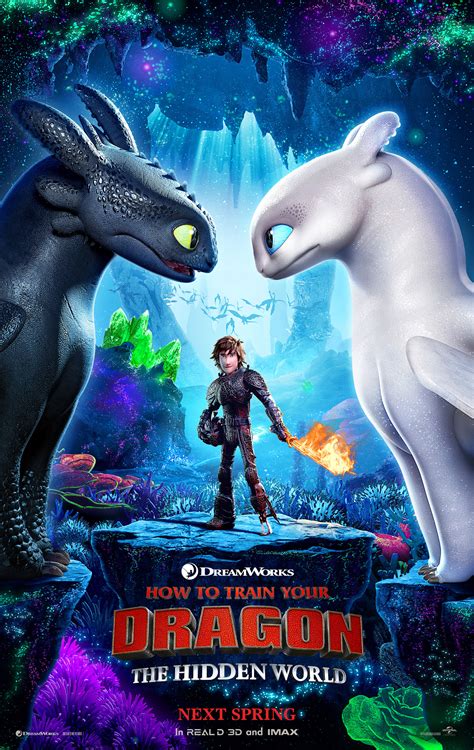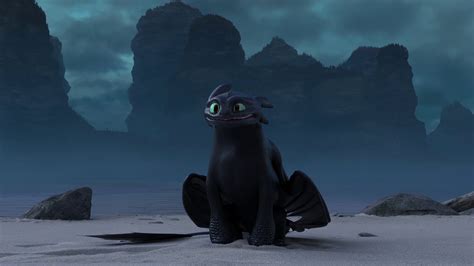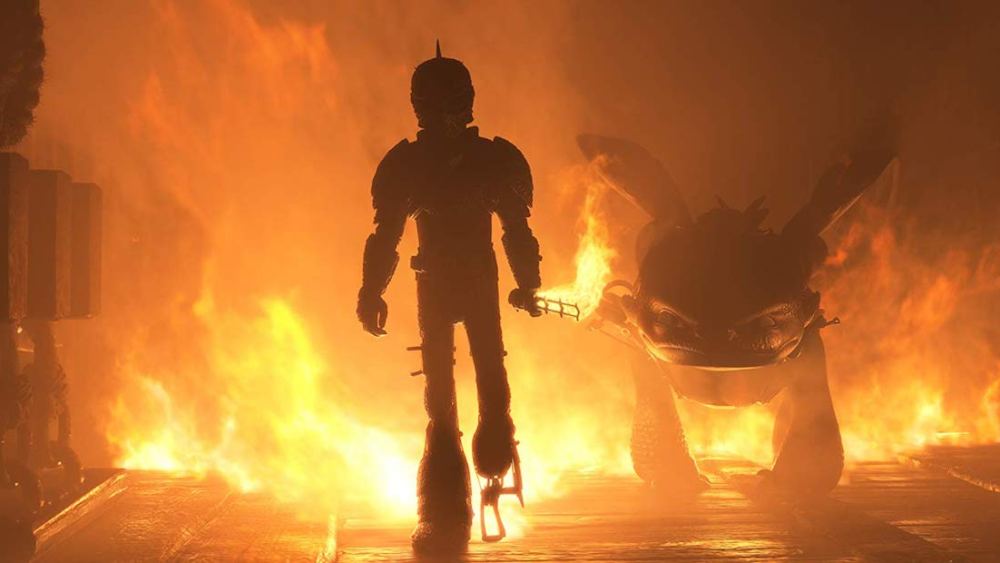by Tim
 Only time will tell which five movies are going to receive nominations for the Best Animated Feature Oscar in January, but I can tell you this much with absolute certainty: there are going to be a lot of sequels in the mix. Each of the four biggest American animation studios released a single film in 2019, and each one of those was a franchise entry. Disney had the blockbuster hit Frozen II just a month ago, and their corporate cousin Pixar released the slightly smaller hit Toy Story 4 over the summer. Illumination Entertainment had a rare flop with The Secret Life of Pets 2. Before any of these, though, came my pick for the best major studio animated feature of the year, and a film we really haven't talked about very much at the Film Experience: DreamWorks Animation's How to Train Your Dragon: The Hidden World, third and final film in a trilogy that started in 2010.
Only time will tell which five movies are going to receive nominations for the Best Animated Feature Oscar in January, but I can tell you this much with absolute certainty: there are going to be a lot of sequels in the mix. Each of the four biggest American animation studios released a single film in 2019, and each one of those was a franchise entry. Disney had the blockbuster hit Frozen II just a month ago, and their corporate cousin Pixar released the slightly smaller hit Toy Story 4 over the summer. Illumination Entertainment had a rare flop with The Secret Life of Pets 2. Before any of these, though, came my pick for the best major studio animated feature of the year, and a film we really haven't talked about very much at the Film Experience: DreamWorks Animation's How to Train Your Dragon: The Hidden World, third and final film in a trilogy that started in 2010.
The film was greeted without much enthusiasm, whether from critics, fans of the series, or audiences more generally; this seems horribly unfair to me. While it is more than a little bit of a retread of 2014's How to Train Your Dragon 2 in its plot and especially in its generic, forgettable villain (and one should never think "unforgettable" when watching a character played by F. Murray Abraham, but here we are), the emotional stuff is all new...
The Dragon franchise has been, as I'm sure many of you know, a long-form metaphor for pet ownership, with the adorable dragon Toothless serving either as modern cinema's best animated cat or its best animated dog, depending on the film. Whichever it is, the artists have taken such enormous care to fill him up with personality through his wide-expressions and playful movements that, after three films, I'm very comfortably calling him my favorite example of computer-generated character animation.

But for as much as the unbearably sweet antics of Toothless are what gets families in the door, what the films have actually been about is the process of growing from adolescence to adulthood. The first movie is about being a frustrated, bored teenager; the second is about being a recent college grad, ready and scared to start taking on responsibilities as a fully-functioning member of society. This third movie is, I think, about hitting 30: you've figured everything out and life seems stable in a very satisfying way, just in time for everything to start changing. The film's hero, viking chief Hiccup (voiced, as ever, by Jay Baruchel), spends the entire movie trying to figure out how to keep the future from coming, and the arc of the movie is all about he learns to get over this. Writer-director Dean DeBlois is smart enough to know that his audience guessed in advance where all of this is going, and probably did so based solely on hearing that a third and final How to Train Your Dragon movie was being made. So rather than treat the inevitable end-point of this story as a shocking emotional gut-punch, he spends the whole movie foreshadowing it and leaning into it. And this pays off in a really remarkable, low-key ending. This is not a movie that wants to make you cry, which frankly shocked me the first time I saw it. This is a movie that wants you to know that it's going to be okay, and the level of restraint necessary to go for that message instead of handing us a tissue and demanding we weep makes this unusually nuanced and mature for what is still, ultimately, an adventure-comedy for children.
The story is the heart and soul of the thing, but it doesn't hurt matters that it's far and away the most technically accomplished film DreamWorks has ever made. There are the expected moments of obvious, knock-your-socks-off beauty: the hidden world of the title is a dazzling kaleidoscope, with rich primary colors shining from every corner of a massive space that the virtual camera floats through with the joyful weightlessness that has always characterized this franchise's flight sequences. But what's really impressive is the lighting. For the third time running, the film has brought on Roger Deakins to serve as consultant, and it sure looks like the work of one of the greatest living cinematographers, right from the start. The film opens during a setpiece in a thick fog bank, lit with torches and lamps that each have a different way of throwing illumination through the thick atmosphere. It almost feels like they're just showing off for the sake of it, except that it creates such an evocative mood, so cool and clammy you can almost feel the damp air and the humid flames.

This will be something that the film does a lot of. All of the excellent lighting, and the creation of virtual sets, are bent in the direction of making very physical tangible atmospheric places. It's not aiming for photorealism, like Toy Story 4; there's a distinct layer of magical otherworldliness to most of the film's visuals. But it's very present otherworldliness, if that follows. The film's locations are very easy to feel, and that feeling is central to its character drama: it's about the coziness of places you don't want to leave behind, and being hyper-aware of every bit of what new places look and sound and smell like. The technique is impressive on its own right, but it matters most because of how well it supports The Hidden World's emotional journey. And those emotions, in turn, are what make this a terrific conclusion to one of the very best trilogies of the 21st Century.
More on the Animated Contenders
Frozen 2
Klaus
This Magnificent Cake
Missing Link (Interview)
White Snake
Ne Zha
I Lost My Body
The 32 Eligible Films
Current Predictions